Year 2
The English curriculum is built around the three interrelated strands of language, literature and literacy. Teaching and learning programs should balance and integrate all three strands. Together, the strands focus on developing students' knowledge, understanding and skills in listening, reading, viewing, speaking, writing and creating. Learning in English builds on concepts, skills and processes developed in earlier years, and teachers will revisit and strengthen these as needed.
In Year 2, students communicate with peers, teachers, students from other classes and community members.
Students engage with a variety of texts for enjoyment. They listen to, read, view and interpret spoken, written and multimodal texts in which the primary purpose is to entertain, as well as texts designed to inform and persuade. These encompass traditional oral texts, picture books, various types of print and digital stories, simple chapter books, rhyming verse, poetry, non-fiction, film, multimodal texts, dramatic performances and texts used by students as models for constructing their own work.
The range of literary texts for Foundation to Year 10 comprises Australian literature, including the oral narrative traditions of Aboriginal and Torres Strait Islander Peoples, as well as the contemporary literature of these two cultural groups, and classic and contemporary world literature, including texts from and about Asia.
Literary texts that support and extend Year 2 students as independent readers involve sequences of events that span several pages and present unusual happenings within a framework of familiar experiences. Informative texts present new content about topics of interest and topics being studied in other areas of the curriculum. These texts include language features such as varied sentence structures, some unfamiliar vocabulary, a significant number of high-frequency sight words and words that need to be decoded phonically, and a range of punctuation conventions, as well as illustrations and diagrams that support and extend the printed text.
Students create a range of imaginative, informative and persuasive texts including imaginative retellings, reports, performances, poetry and expositions.
(source: www.australiancurriculum.edu.au)
Achievement Standard
Receptive modes (listening, reading and viewing)
By the end of Year 2, students understand how similar texts share characteristics by identifying text structures and language features used to describe characters and events, or to communicate factual information.
They read texts that contain varied sentence structures, some unfamiliar vocabulary, a significant number of high-frequency sight words and images that provide extra information. They monitor meaning and self-correct using knowledge of phonics, syntax, punctuation, semantics and context. They use knowledge of a wide variety of letter-sound relationships to read words of one or more syllables with fluency. They identify literal and implied meaning, main ideas and supporting detail. Students make connections between texts by comparing content. They listen for particular purposes. They listen for and manipulate sound combinations and rhythmic sound patterns.
Productive modes (speaking, writing and creating)
When discussing their ideas and experiences, students use everyday language features and topic-specific vocabulary. They explain their preferences for aspects of texts using other texts as comparisons. They create texts that show how images support the meaning of the text.
Students create texts, drawing on their own experiences, their imagination and information they have learnt. They use a variety of strategies to engage in group and class discussions and make presentations. They accurately spell words with regular spelling patterns and spell words with less common long vowel patterns. They use punctuation accurately, and write words and sentences legibly using unjoined upper- and lower-case letters.
(source: www.australiancurriculum.edu.au)
- Plus Plan
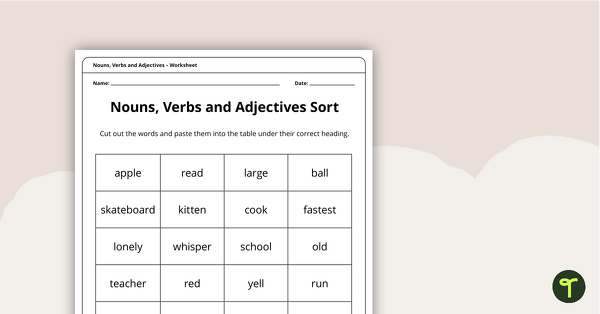
Nouns, Verbs and Adjectives – Sorting Task
Help students learn the difference between nouns, verbs, and adjectives with this cut-and-paste sorting worksheet.
- Plus Plan

Oral Language Activities
Share these oral language activities with your students to help them practise listening to others, expressing opinions, receiving instructions, and more!
- Plus Plan
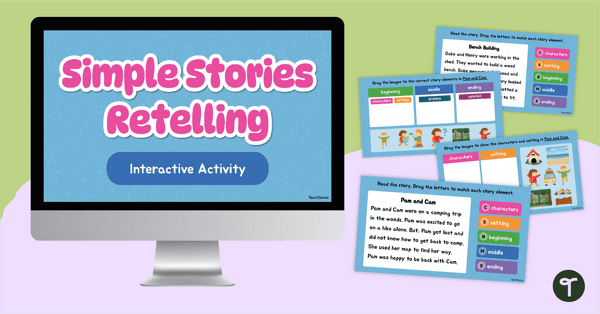
5 Elements of a Short Story Activity
Explore the 5 elements of a short story using this digital activity with five short stories.
- Plus Plan
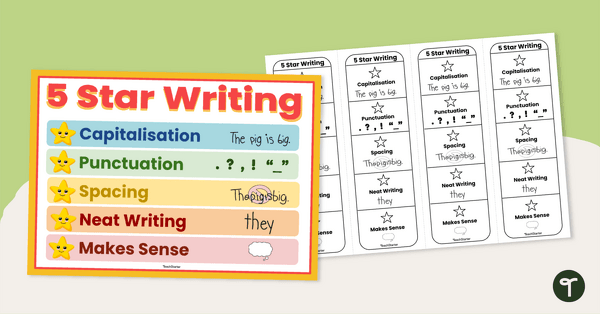
5 Star Writing Poster and Bookmark Set
Share this 5 star writing poster and bookmark set with your students to remind them how to be "star" writers.
- Plus Plan
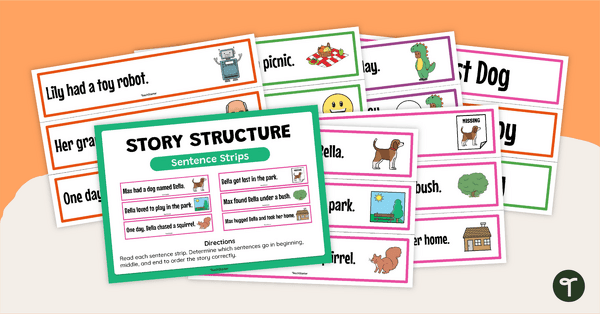
Story Structure Sentence Strips
Explore sentences that form the beginning, middle and end of 5 short stories with this sorting activity for younger year levels.
- Plus Plan
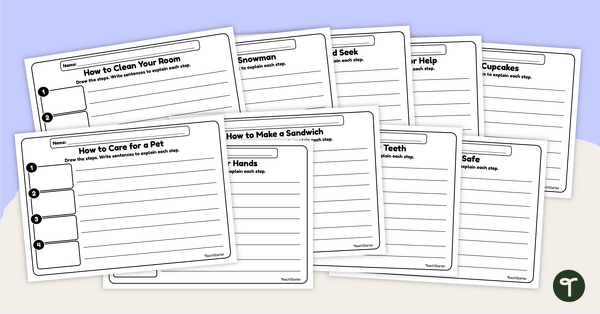
"How To" Procedural Writing Prompt Worksheets
Help your little learners write a procedural text using these handy "How to" writing prompt worksheets.
- Plus Plan
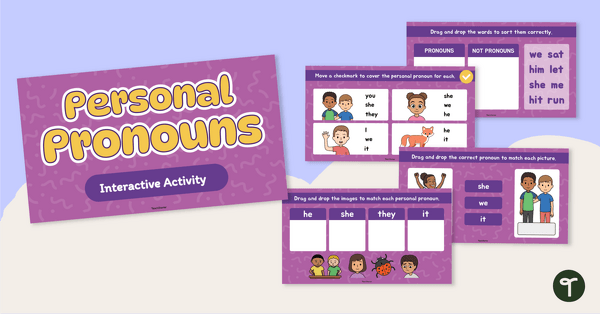
Personal Pronouns Interactive Activity
Use these digital personal pronouns exercises in your grammar lessons to give your students practice in using these essential parts of speech.
- Plus Plan
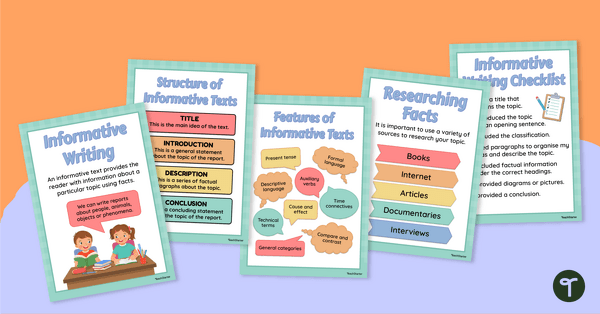
Informative Writing Posters
Display this set of 5 information report posters in your classroom during your informative writing unit.
- Plus Plan
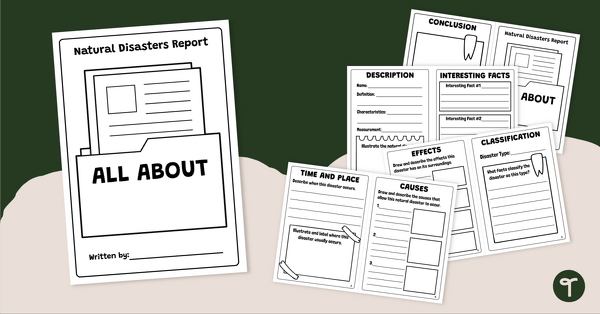
Natural Disasters Report – Mini Book Template
Download this natural disasters information report template to use when teaching informative writing to primary students.
- Plus Plan
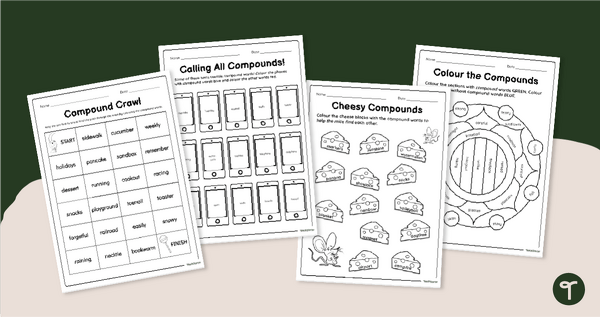
Compound Word Colouring Worksheets
Colour the compound words and boost your students' vocabulary with a pack of printable Compound word colouring worksheets.
- Plus Plan
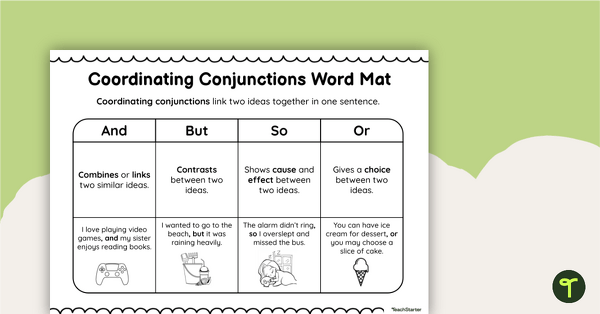
Coordinating Conjunction Word Mat
Boost your students’ writing skills by giving them access to this coordinating conjunctions word mat during literacy lessons.
- Plus Plan
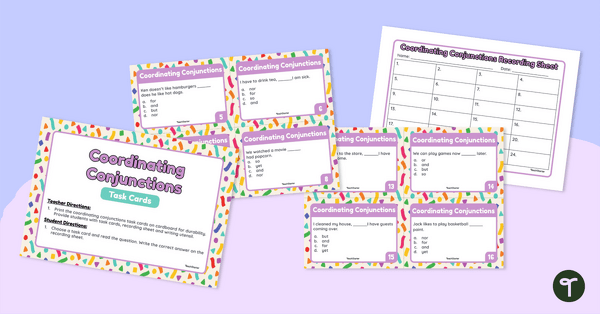
Coordinating Conjunctions Task Cards
Use this set of 24 task cards to reinforce students' understanding of coordinating conjunctions and building compound sentences.
- Plus Plan
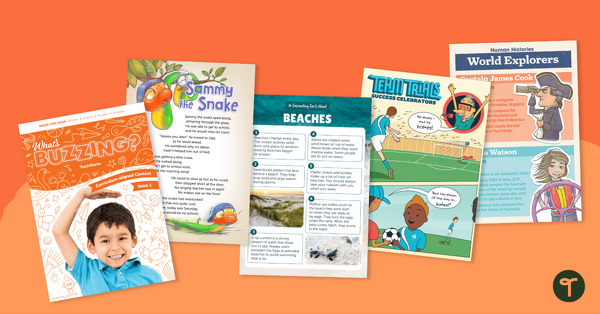
Year 2 Magazine - What's Buzzing? (Issue 1)
A beautifully designed, 24-page reading magazine specifically written for Year 2 students.
- Plus Plan
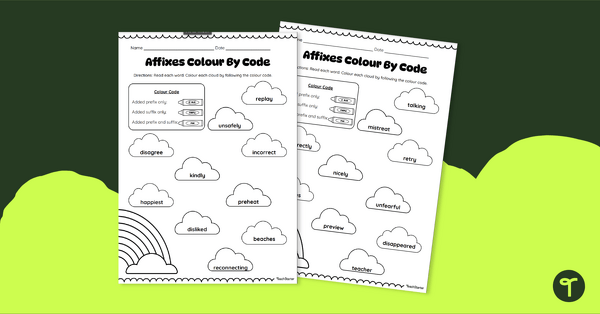
Prefixes and Suffixes - Colour By Code Worksheets
Practise identifying words with affixes with a fun colour-by-code worksheet.
- Plus Plan
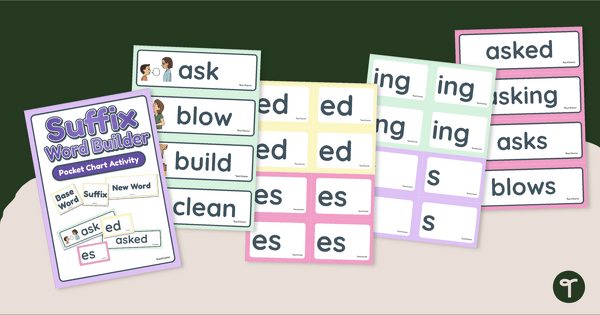
Suffix Word Building Activity
Build words using the suffixes -ed, -es, -s, and -ing with a printable word-building pocket chart card pack.
- Plus Plan
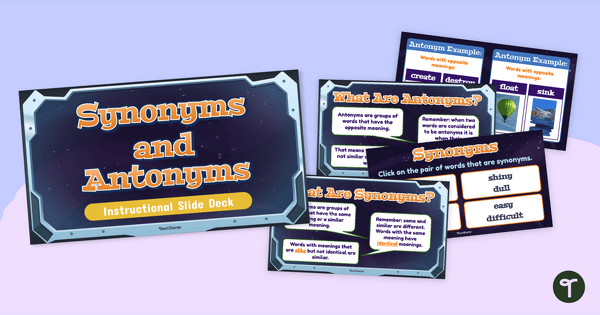
Synonym and Antonym Instructional Slides
Build skills in identifying synonyms and antonyms with an interactive instructional slide deck.
- Free Plan
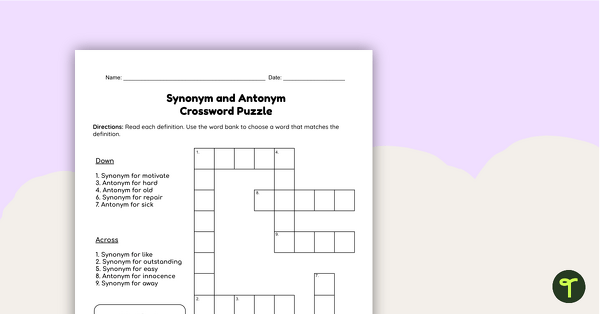
Synonym and Antonym Crossword Puzzle
Review vocabulary skills and boost your students’ knowledge of synonyms and antonyms with a crossword puzzle worksheet.
- Plus Plan
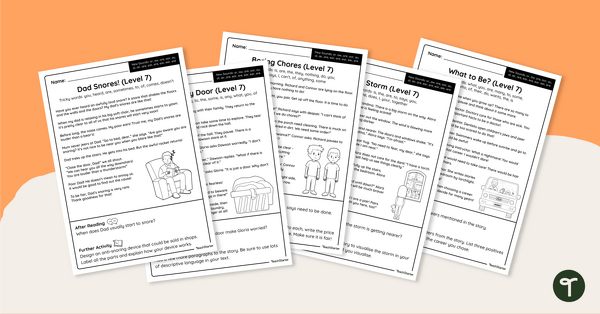
Level 7 Decodable Readers - Worksheet Pack
A set of one-pager worksheet versions of the texts from our Level 7 decodable readers.
- Plus Plan
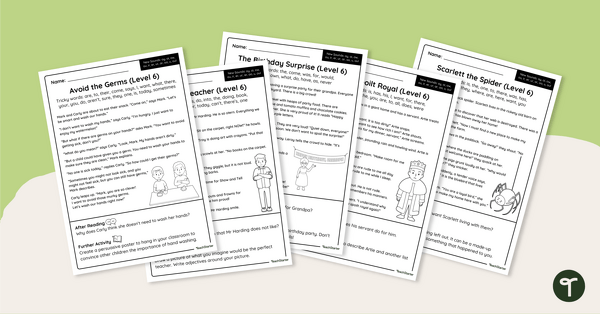
Level 6 Decodable Readers - Worksheet Pack
A set of one-pager worksheet versions of the texts from our Level 6 decodable readers.
- Plus Plan
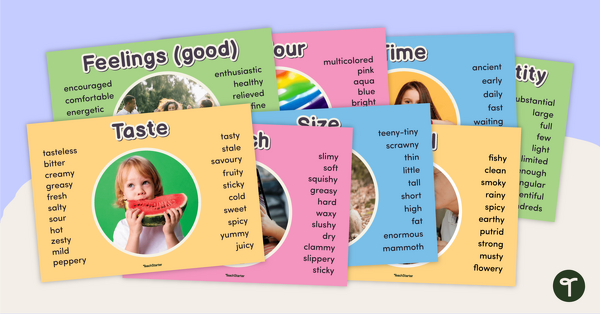
Adjectives Poster Pack
Get your students to use new words to describe objects with this set of 13 bright and colourful posters.
- Free Plan
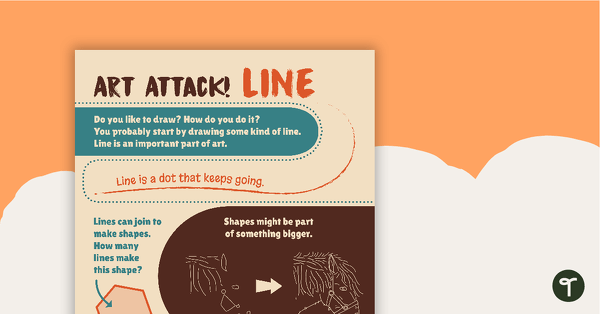
Art Attack! Line – Worksheet
A comprehension worksheet for a magazine article from the Year 1 magazine (Issue 3).
- Plus Plan
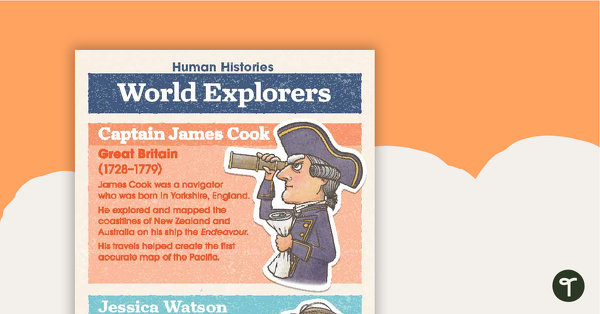
Human Histories: World Explorers – Comprehension Worksheet
A comprehension worksheet for a magazine article about some world explorers and their achievements.
- Plus Plan
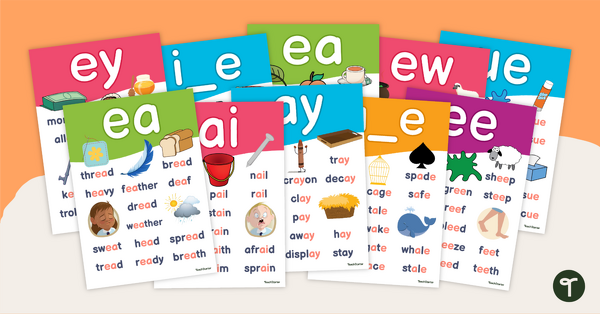
Vowel Digraphs Poster Pack
Expose your students to the most common vowel digraphs with this set of 24 posters.
- Plus Plan
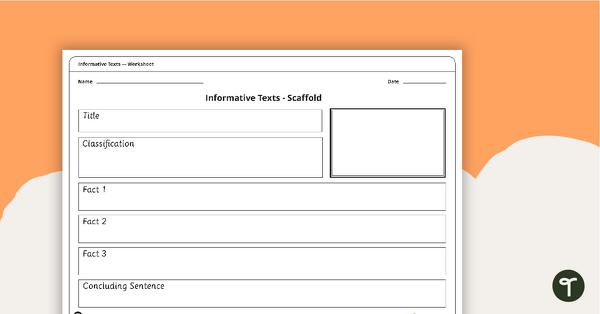
Simple Informative Texts - Writing Scaffold
A simple scaffolding worksheet to use when writing informative texts.
- Plus Plan
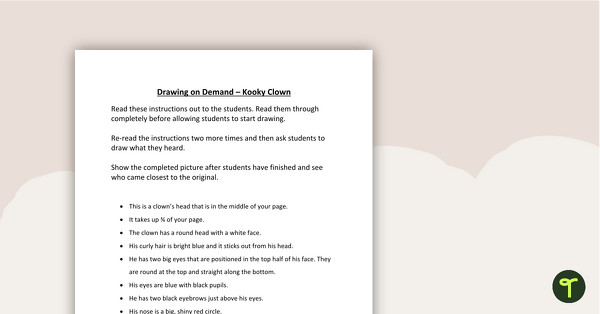
Drawing on Demand - Kooky Clown
An art activity that incorporates both drawing and listening skills.
- Plus Plan
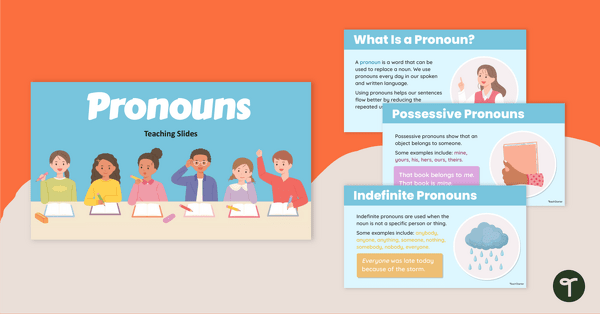
Pronouns Teaching Slides
Use this pronouns PowerPoint presentation to teach your students about some of the most common types of pronouns.
- Plus Plan
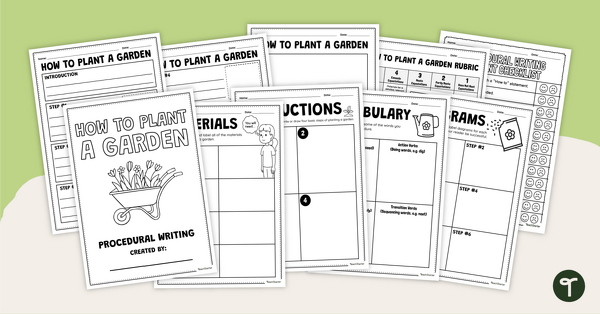
How to Plant a Garden – Procedural Writing Project
Get your students writing high-quality procedure texts with this fun “How to Plant a Garden” procedural writing project.
- Plus Plan
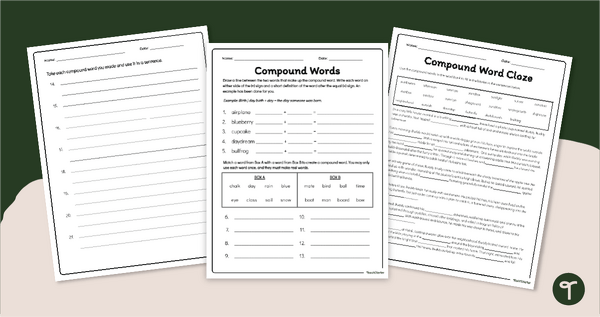
Compound Words - Worksheet Pack
Practise using compound words in sentences with. a pair of printable compound word worksheets for older students.
- Plus Plan
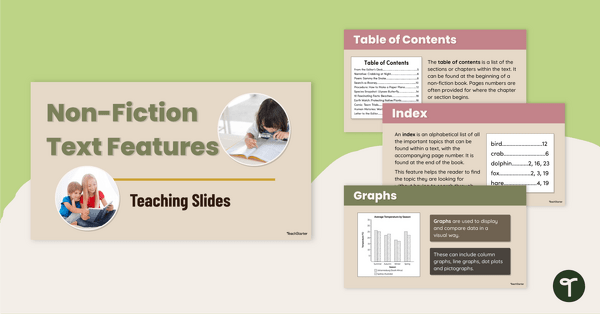
Non-Fiction Text Features Teaching Slides
Explore the features of non-fiction texts with your students using this detailed and age-appropriate slideshow for primary school literacy lessons.
- Plus Plan
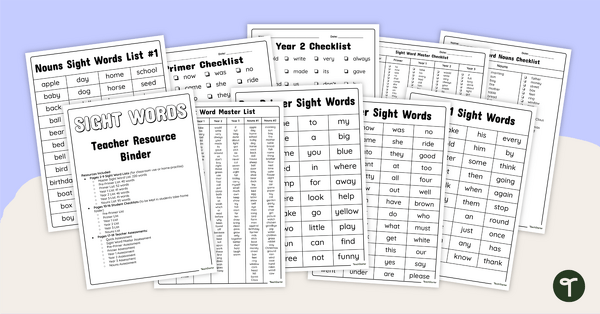
Sight Word Lists – Teacher Resource Binder
Use this collection of checklists, student pages and quick-check assessments when reviewing Dolch sight words spanning from pre-primer to year 3.
- Free Plan
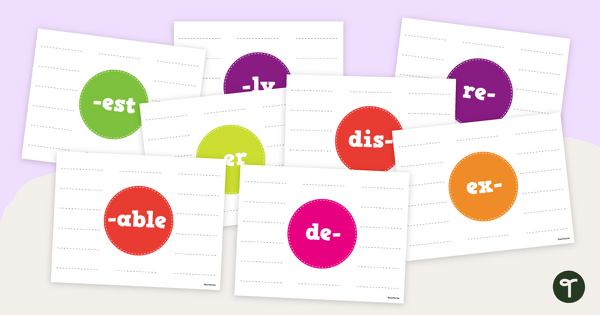
Prefix and Suffix Gallery Walk Activity
Get your students up and learning about prefixes and suffixes with an engaging gallery walk activity.
- Free Plan
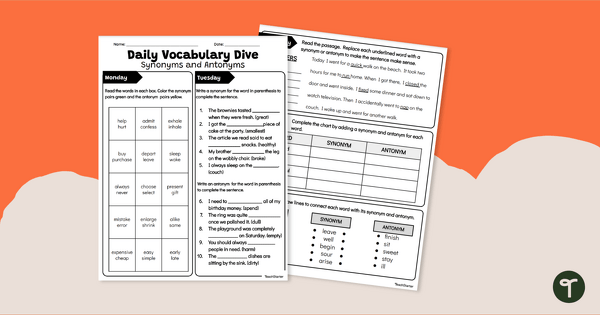
Daily Vocabulary Dive - Synonyms and Antonyms Worksheet
Give your students a daily dose of synonym and antonym review with a 5-day vocabulary warm-up worksheet.